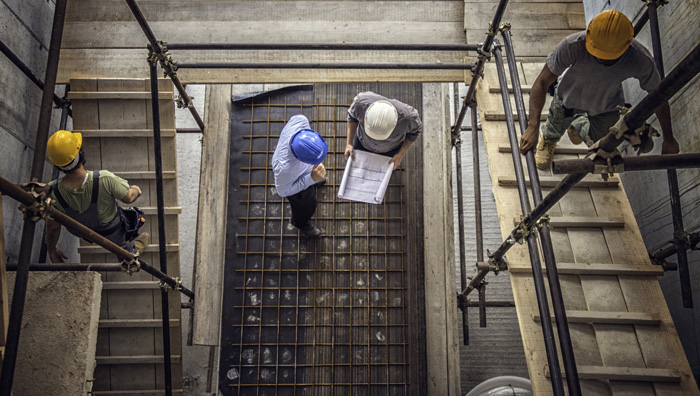Installing an elevator is no easy task, especially if it’s going in a commercial building. Residential elevators are somewhat simpler, but both jobs require proper planning, compliance, high-quality products, and more.

Here’s a quick guide to the elevator installation process.
Determine Building Structure and Support
The first decision when designing a building is where to put the elevator. Each floor must also support a loaded carriage. After the builders construct the building, each elevator shaft must be inspected to ensure they are structurally sound and that each floor can handle the weight of a full-capacity elevator.
Elevator design is the hallmark of a successful installation. Many factors dictate the design, such as building structure, local codes, and intended use. Well-designed elevators guarantee safety, longevity and efficiency for a smooth experience for all users.
Install Rail Brackets and Guide Rails
Once the shaft and building pass inspection, each part of the elevator is installed in a methodical fashion. The rail brackets must be perfectly straight, as those are what keep the cab traveling in a straight line. The rail brackets, installed first at the top, must be triple-checked to ensure safety.
Once those are straight, it’s time for the guide rails to be installed, as they connect to the carriage via guide shoes. Think of the guide rails as the foundation of the elevator, serving as the tracks. As such, they require precise alignment for seamless operation and smooth movement inside the shaft.
Fit the Elevator Drive
Next up is to install the elevator drive, of which there are many types (traction and hydraulic are the most common). In a nutshell, the drives control the vertical movement of the elevator. Traction drives operate with a counterweight and pulley system to move the elevator carriage, while hydraulic drives operate via pressurized oil to move the carriage.
Install the Carriage and Gates
The carriage, or cab, is what the passengers ride in. The gates enclose the shaft when the cab is on a different floor, operating in tandem. When the cab stops at each floor level, the elevator doors open. Wiring and magnets are installed to ensure this process is seamless.
Install Electrical Wiring
Now that all the vital components are in place, electricians wire the entire elevator to prepare it for use. Then, testing will be done to ensure proper function and safety. After inspection and certification, the elevator is ready to be used. Inspections must then be done on an annual basis to ensure continued compliance.
Contact Mowrey Elevator
Now that you are aware of the elevator installation process, it’s time to order the products and materials you need. Contact us today and browse our online catalog of parts.
